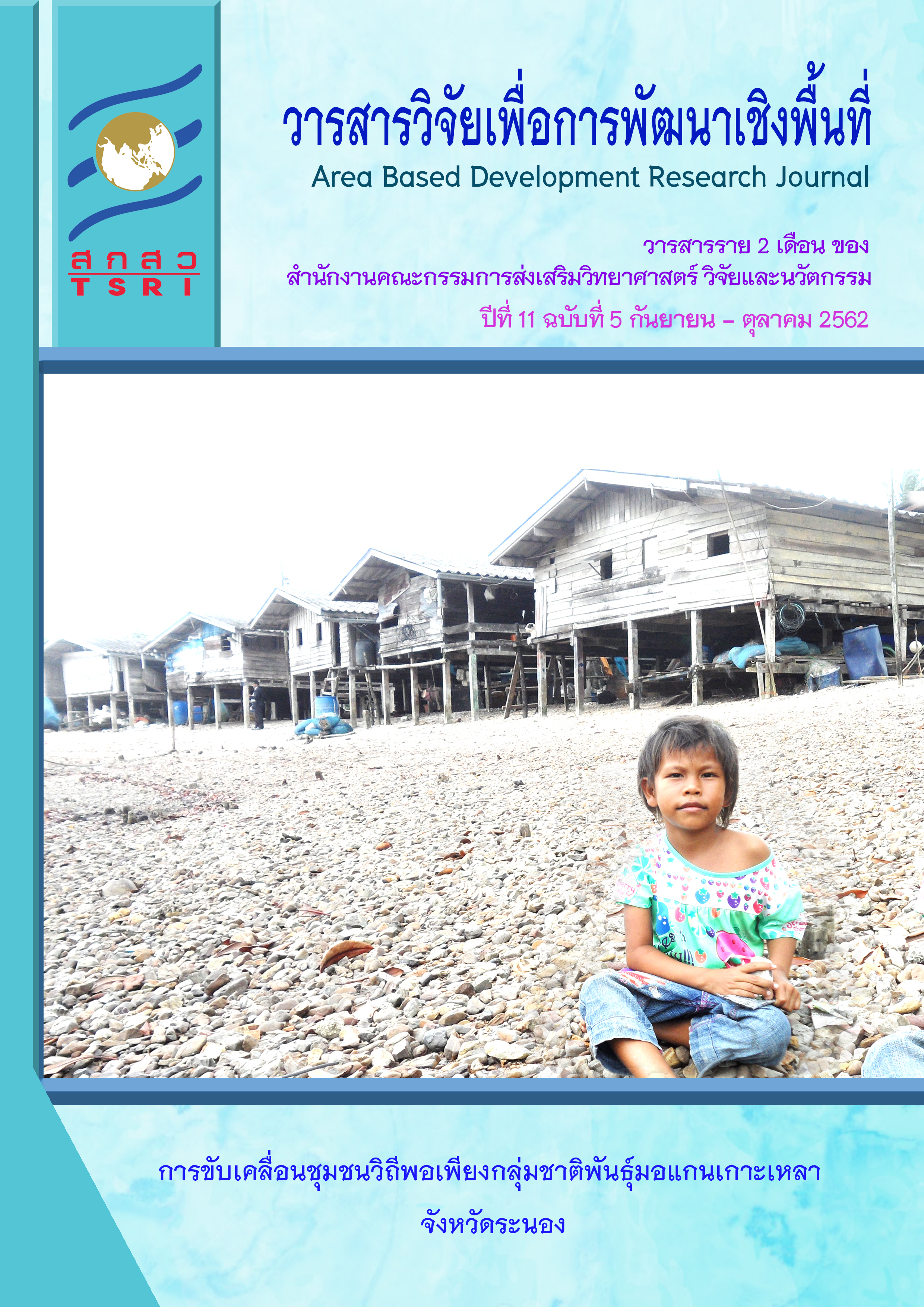The Process to Create a Pattern of Mud Mee Woven Fabric with the Participation of Ban Muang Hom Woven Handicraft Group, Phitsanulok Province
Main Article Content
Abstract
This research aims to design the weaving and dyeing techniques through community’s participation. The research is a blend of both qualitative and quantitative approaches in the form of action research. The sample group is 10 people from Mudmee Ban Muang Hom, Wang Thong district, Phitsanulok province. The research is conducted in 3 stages: 1) an exploration of the local context, 2) a workshop on weaving patterns development, and 3) an evaluation of consumers’ satisfaction. The instruments employed include a survey, interview and questionnaire. The 3 key research findings are revealed. 1) The community needs to upgrade the products to meet the OTOP standards and the ability to design woven fabric patterns. 2) The Mee Khan woven patterns and cloth dyeing developed through community participatory process are (1) Mee Kho Thayang patterns, (2) Mee Dok khud San patterns, (3) Mee Luk Khang patterns, and (4) Mee Seelaim Khan patterns; the 4 dye-colors are yellow, fuchsia pink, emerald green and black. 3) The consumers’ satisfaction with the developed patterns of woven fabric is at a high level. The woven fabric products have been awarded a 4-star of OTOP standards.
Article Details
References
4(1), 59-81.
จุรีวรรณ จันพลา, วลี สงสุวงค์, เพ็ญสินี กิจค้า และ สุรีรัตน์ วงศ์สมิง. (2559). การพัฒนารูปแบบผลิตภัณฑ์ผ้าทอไทยทรงดำ
เพื่อสร้างมูลค่าเพิ่มตามแนวทางเศรษฐกิจสร้างสรรค์. Veridian E-Journal, Silpakorn University, 9(2), 82-98.
ใจเพชร ศรีรักษา, ฑัชชา ปรีดาวิจิตรกุล และ ณิรชญา จังติยานนท์. (มปป.). โครงการออกแบบลวดลายไหมมัดหมี่. (รายงานสหกิจศึกษา). ปทุมธานี: สาขาออกแบบแฟชั่นและศิลปะสิ่งทอ คณะศิลปกรรมศาสตร์ มหาวิทยาลัยเทคโนโลยีราชมงคลธัญบุรี.
ณปภัช จันเทร์เมือง, ชัชวาล รัตนพันธุ์ และเปมิกา แซ่เตียว. (2561). ผลิตภัณฑ์ชุมชนจากวัสดุยางพาราแปรรูป อำเภอพิปูน
จังหวัดนครศรีธรรมราช. วารสารวิจัยเพื่อการพัฒนาเชิงพื้นที่, 10(5), 351-364.
พรชัย ปานทุ่ง. (2562). การพัฒนาผลิตภัณฑ์ผ้าทอแบบมีส่วนร่วมของชุมชนบ้านภูทอง จังหวัดสุโขทัย. วารสารวิจัยเพื่อการ
พัฒนาเชิงพื้นที่, (11)4, 331-345.
สำนักงานพัฒนาชุมชนจังหวัดพิษณุโลก. (2562). พิษณุโลก เดินหน้าคัดสรรสุดยอด OTOP ตั้งเป้าติดดาว 250 ผลิตภัณฑ์.
สืบค้นเมื่อวันที่ 18 มิถุนายน พ.ศ. 2562, จาก https://phitsanulok.cdd.go.th/2019/05/21.
ศุภางค์ นันตา, พุฒิพงษ์ รับจันทร์, จณัญญา วงศ์เสนา จงศิริ และ สมยศ พรมงาม. (2562). การสื่อสารเพื่อใช้ประโยชน์จาก
งานวิจัย: เกษตรอินทรีย์มีชีวิต เล่าเรื่องผ่านวิธีคิดคนยโสธร. วารสารวิจัยเพื่อการพัฒนาเชิงพื้นที่, 11(2), 123 – 134.
